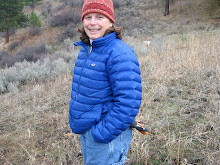 For almost two decades, there was much bally-hooing among students of the West, that there were signs of a New West. The New West's economies were more urban based, less natural resource dependent. Our focus on the natural world would be amenity rather than resource driven. Gateway communities would spring up near the magnificent sights, such as Yellowstone, Yosemite, Canyonlands and Zion. For the longest time, eco-tourism was the buzzword. The much extended version of eco-tourism were all encompassing resort developments. Golf courses, spas, hiking trails, wildlife viewing, fly fishing. Everything was environmentally sensitive and the sun always shined. Names like Suncadia, Sun River, Tamarack where lots were sold, dreams were made.
For almost two decades, there was much bally-hooing among students of the West, that there were signs of a New West. The New West's economies were more urban based, less natural resource dependent. Our focus on the natural world would be amenity rather than resource driven. Gateway communities would spring up near the magnificent sights, such as Yellowstone, Yosemite, Canyonlands and Zion. For the longest time, eco-tourism was the buzzword. The much extended version of eco-tourism were all encompassing resort developments. Golf courses, spas, hiking trails, wildlife viewing, fly fishing. Everything was environmentally sensitive and the sun always shined. Names like Suncadia, Sun River, Tamarack where lots were sold, dreams were made.And now, there is the New New West. Or perhaps a reversion to parts of the West that are familiar to old Westerns, the ghost towns. Ghost towns are the remnants of boom and busts. Mining towns such as Sunshine, Wallace,Virginia City, Cripple Creek. Logging towns like Granite Falls, Forks, Klamath Falls, Libby. Or fishing communities with empty harbors in Blaine, Coos Bay, and Westport. Now the new ghost towns are Yellowstone Club, Tamarack, Semiahmoo, and even Bend.
But unlike the old ghost towns where hoards of people stripped the land of trees, gold, silver, and the coastal waters of salmon and crab, these new "boomers" were developers who robbed the land of it's soul. They made the history of the area a moniker for their multimillion dollar developments, calling elaborate bars and restaurants names of things long buried by their greed. They co-opted Native American names and architecture, hanging Edward Curtis photos on the wall as if to authenticate the "western feel."
And now they are financially broke. More ghost towns. Torn up land with hulking, empty structures. And it seems the common theme among so many of these developments is the amount of leverage used by the developers. It wasn't their money. And the other common theme was the attempt by so many of them to appeal to the wealthy, or the wealthy-wanna-bes. Perhaps the lesson we may learn from these haunted developments is that there are not enough people willing to leverage their lives to live behind gated communities reeking of exclusivity. Certainly, that isn't part of the Western ethos of egalitarianism. It's as if these developers hadn't a clue what parts of the west remain in the air, the soil, the rivers despite their attempts to make it gated, exclusive, for the monied.
It's a good thing in the West, whether new or newer, that nature seemingly endures all our know-it-all follies and that the wind through the Ponderosa pines still reminds us that it will endure long after the Tamaracks and Horizons become dust.




No comments:
Post a Comment